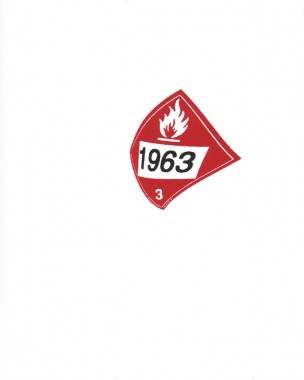
Sowon Kwon, dongghab
Softcover, 48 pp., offset 4/2, 5.5 x 7 inches
Edition of 500
ISBN 978-0-9829524-0-5
Published by Vermont College of Fine Arts
$15.00 ·
dongghab traces an online search in which the point of departure is the discovery that the publication of Edward Ruscha’s
Twentysix Gasoline Stations and the suicide of Sylvia Plath by oven gas both occurred in 1963, the year of Kwon’s birth. Cued by Ruscha’s seminal work, Kwon unveils an uncanny cosmology of events constellated by the convergence of “1963” with “gasoline” such as the assassination of Medgar Evers (after having lead a successful boycott of white-owned gasoline stations in Jackson, Mississippi) and the self-immolation of Thich Quang Duc in Saigon (in protest of the oppression of Buddhists by the Catholic administration of then president Ngo Dinh Diem), among others. The Korean word
dongghab describes a social relationship between people born in the same year, so that the idea of a (self) portrait as socially contingent and historically determined as much as individuated, informs the book.
New York-based artist Sowon Kwon works in a range of media including sculptural and video installations, digital animation, drawing, and printmaking. Her recent work explores portraiture, perception, and historical memory as our bodies are increasingly submitted to and made accessible through technology. She has had solo exhibitions at The Kitchen in New York City, Matrix Gallery/Berkeley Art Museum, and the Whitney Museum of American Art at Philip Morris (now Altria).
Aisha Burnes, Art, Berkeley Art Museum, Distribution, Ed Ruscha, Medgar Evers, Ngo Dinh Diem, Sowon Kwon, The Kitchen, Thich Quang Duc, Ulrike Müller, Vermont College of Fine Arts, Whitney Museum
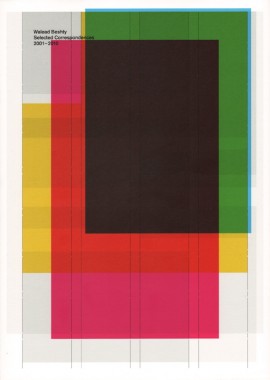
Walead Beshty, Selected Correspondences 2001-2010
Softcover, 128 pp., offset 4/1, 210 x 297 mm
Edition of 2000
ISBN 978-88-6208-135-1
Published by Damiani
$49.00 ·
In 2001, Walead Beshty began documenting the Diplomatic Mission of the Republic of Iraq to the former German Democratic Republic in Berlin. Still protected as sovereign territory under the Vienna Conventions, the embassy has stood abandoned since the early 1990s as, in Beshty’s words, “a relic of two bygone regimes, unclaimable by any nation; a physical location marooned (by) symbolic shifts in global politics, a ruin set apart neitherby fences nor by millennia, but by the invisible and abstract mechanisms of international law”. The site inspired his ongoing engagement with the invisible and marginal territories of globalization which provide an important line through his photographic and sculptural work of the past decade. Selected Correspondences focuses on three bodies of photographic work — two that deal with the Embassy directly and a third, Transparencies, which continues the question of place and movement. The work has been exhibited at the Hammer Museum in Los Angeles, Tate Britain, London, and the Whitney Museum of American Art in New York, among others, and is brought together here for the first time, accompanied by two new essays on the projects.
Art, Criticism, Damiani, DAP, Eric Schwab, Hammer Museum, Iraq, Jason Smith, Peter Eleey, Photography, Tate Museum, Walead Beshty, Whitney Museum, Writings
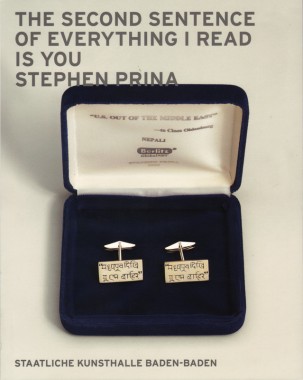
Stephen Prina, The Second Sentence of Everything I Read is You
Softcover, 176 pp., offset 4/4, 215 x 270 mm
Edition of 2000
ISBN 0-978-3-86560-512-2
Published by Walther König
$45.00 ·
Preface by Karola Grässlin.
Essays
The Great Persuader by Astrid Wege; How Far We’ve Come From The River, a conversation between Bennett Simpson and Stephen Prina.
Describing Conceptual artist and musician Stephen Prina’s work in 2004, the Harvard Gazette wrote, “Prina’s artwork is full of unsuspected surprises, secret compartments that pop open to release compressed bundles of meaning or coiling strands of narrative.” His work at the 2008 Whitney Biennial, for example, was conceived as “a traveling spectacle — a mini-Broadway-musical-on-the-road or circus,” according to the artist. This concise retrospective volume presents work from 1979 to 2008, as well as installation views of Prina’s recent one-person exhibition at the Staatliche Kunsthalle Baden-Baden in Germany.
Art, Astrid Wege, Bennett Simpson, DAP, Friedrich Petzel Gallery, Interviews, Karola Grässlin, Staatliche Kunsthalle, Stephen Prina, Walther König, Whitney Museum
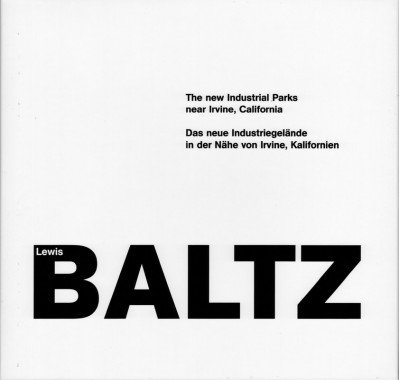
Lewis Baltz, The New Industrial Parks Near Irvine, California
Hardcover/slipcase, 112 pp., offset 1/duotone, 285 x 275 mm
English and German
Edition of 2000
ISBN 0-9630785-6-9
Published by RAM, Steidl
$55.00 ·
Lewis Baltz, with his iconic, minimalist photos of suburban landscape, is considered the founder of the New Topographics movement. Reproduced for the first time, his earliest portfolio, The Tract Houses (1971), and his preliminary forays into a minimal aesthetic, The Prototype Works (1967-1976), illuminate Baltz’s drive to capture the reality of a sprawling Western ecology gone wild. Together with The New Industrial Parks near Irvine, California, this trilogy reveals the indelible importance of Baltz in the development of contemporary photography. “Baltz turned his camera on the virtually featureless built environment of California … He pushed his compositions to an astringent minimum,” writes curator Sheryl Conkelton in an informative essay.
Art, Lewis Baltz, Photography, RAM, Sheryl Conkelton, Steidl, Whitney Museum
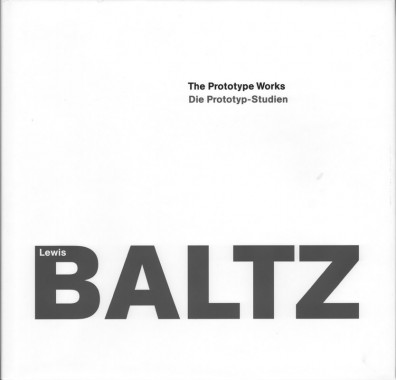
Lewis Baltz, The Prototype Works
Hardcover, 112 pp., offset 1/tritone, 285 x 275 mm
English and German
Edition of 2000
ISBN 0-9703860-5-2
Published by RAM, Steidl
$70.00 ·
Lewis Baltz, with his iconic, minimalist photos of suburban landscape, is considered the founder of the New Topographics movement. Reproduced for the first time, his earliest portfolio, The Tract Houses (1971), and his preliminary forays into a minimal aesthetic, The Prototype Works (1967-1976), illuminate Baltz’s drive to capture the reality of a sprawling Western ecology gone wild. Together with The New Industrial Parks near Irvine, California, this trilogy reveals the indelible importance of Baltz in the development of contemporary photography. “Baltz turned his camera on the virtually featureless built environment of California … He pushed his compositions to an astringent minimum,” writes curator Sheryl Conkelton in an informative essay.
Art, Lewis Baltz, Photography, RAM, Sheryl Conkelton, Steidl, Whitney Museum
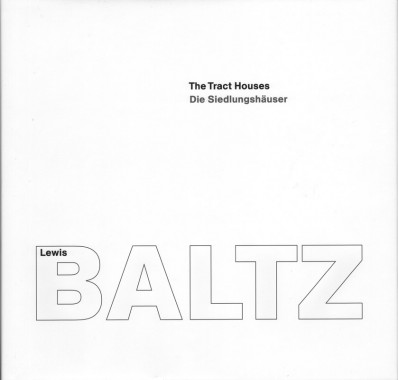
Lewis Baltz, The Tract Houses
Hardcover, 68 pp., offset 1/tritone, 285 x 275 mm
English and German
Edition of 2000
ISBN 0-9703860-4-4
Published by RAM, Steidl
$65.00 ·
Lewis Baltz, with his iconic, minimalist photos of suburban landscape, is considered the founder of the New Topographics movement. Reproduced for the first time, his earliest portfolio, The Tract Houses (1971), and his preliminary forays into a minimal aesthetic, The Prototype Works (1967-1976), illuminate Baltz’s drive to capture the reality of a sprawling Western ecology gone wild. Together with The New Industrial Parks near Irvine, California, this trilogy reveals the indelible importance of Baltz in the development of contemporary photography. “Baltz turned his camera on the virtually featureless built environment of California … He pushed his compositions to an astringent minimum,” writes curator Sheryl Conkelton in an informative essay.
Art, Lewis Baltz, Photography, RAM, Sheryl Conkelton, Steidl, Whitney Museum
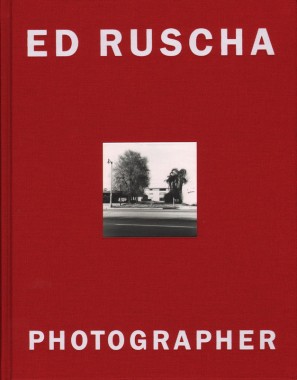
Ed Ruscha, Ed Ruscha Photographer
Hardcover, 184 pp., offset 4/1, 225 x 260 mm
Edition of 2000
ISBN 9783865212061
Published by Steidl
$35.00 · out of stock
Ed Ruscha’s relationship to photography is complex and ambivalent. The world-class painter — and author of a 1972 New York Times article called “‘I’m Not Really a Photographer’” — has been known to refer to his work in this second medium as a “hobby,” despite considerable, persistent critical interest. Whether he likes it or not, the small albums of plainly-shot, snapshot-sized images he produced in the 1960s and 70s, including Twenty-Six Gasoline Stations, intrigued his contemporaries and earned him an unshakable reputation. How? His subject matter was neither purely documentary nor solely artistic, in fact it was stereotypical and banal, with motifs drawn from the car-dominated western landscape. That rebellious material, along with his serial presentation, made for a mythical road-movie or photo-novel effect with Beat Generation overtones. The combination attracted artists and critics both, especially while serial logic was prominent in Pop art and Minimalism, and then retained that interest later as serial work became prominent in Conceptual art. Critics have remained attentive for decades, and Ruscha’s influence remains apparent in new work in Europe and North America. Ed Ruscha, Photographer departs from earlier collections to explore how these images — and all of Ruscha’s work in disciplines including painting, drawing, printmaking and photography–are guided and shaped by a single vision.
Art, DAP, Ed Ruscha, Lynn Scrabis, Makiko Ushiba, Photography, Steidl, Thea Hetzner, Whitney Museum
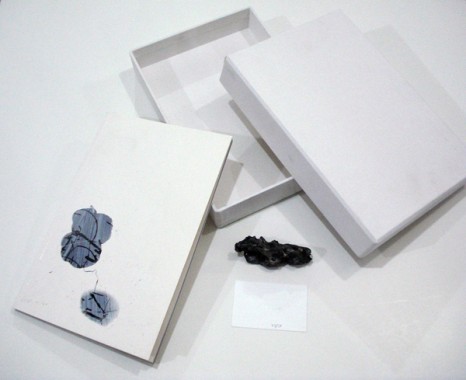
Terence Koh, Whitney Catalog (Special Edition)
Softcover/boxed, 148 pp., offset 4/1, 8.25 x 12 inches
one unique sculpture, one book, one info card signed
Edition of 50
ISBN 13-9780300123
Published by Peres Projects
$1000.00 ·
This special catalog has been created by Terence Koh on the occasion of his exhibition at the Whitney Museum of American Art, New York (January 19-May 27, 2007). Each includes a lead sculpture by the artist. Each book has been hand-gouached. The scratch marks on the surface of the publication made by the sculpture are the intention of the artist.
Art, Distribution, Peres Projects, Terence Koh, Whitney Museum







